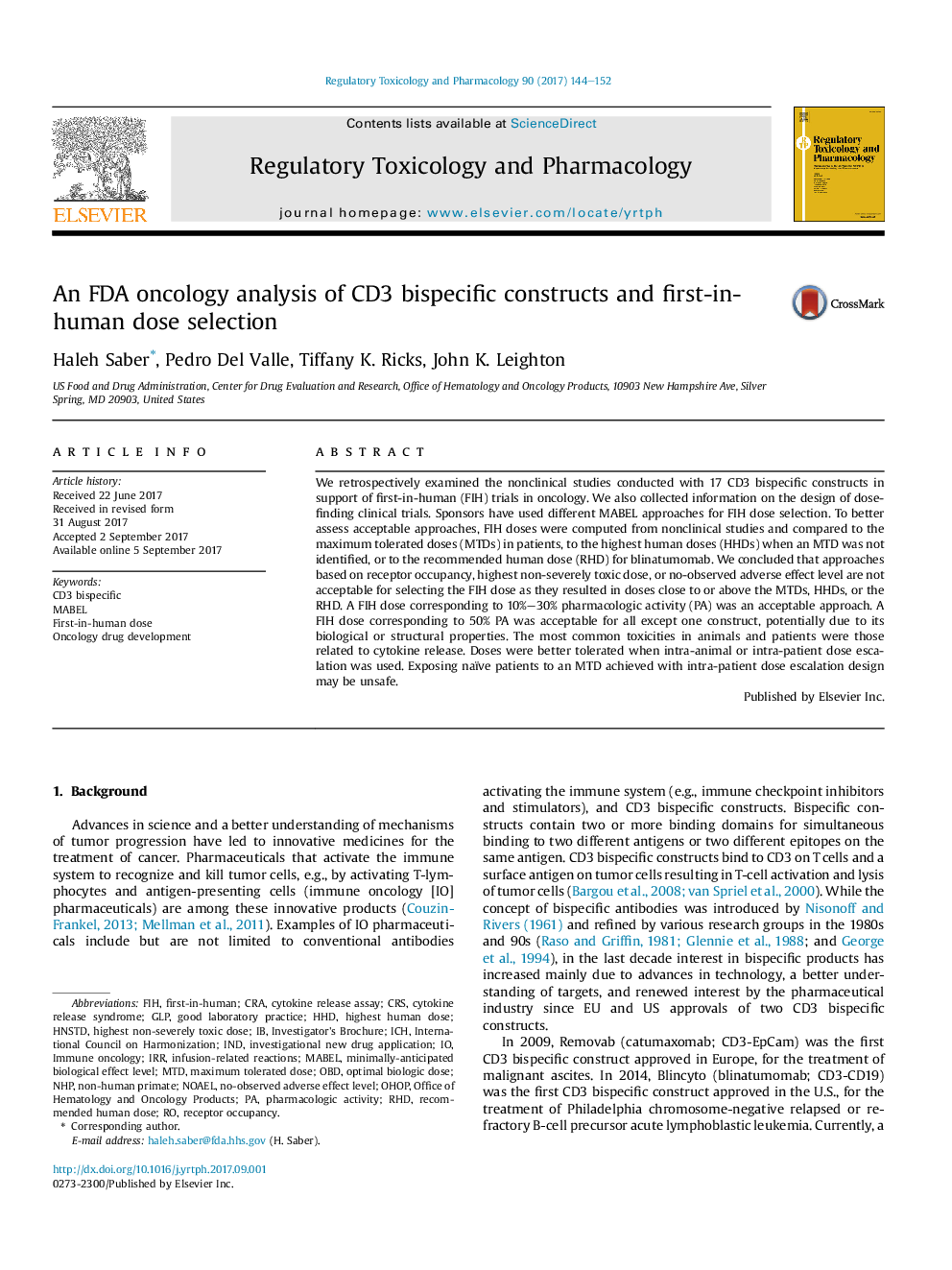| Article ID | Journal | Published Year | Pages | File Type |
|---|---|---|---|---|
| 5561104 | Regulatory Toxicology and Pharmacology | 2017 | 9 Pages |
â¢We retrospectively examined toxicity profile and approaches in selecting the FIH dose for 17 CD3 bispecific constructs.â¢Selecting a FIH dose based on NOAEL, HNSTD, or RO was not acceptable.â¢A FIH dose at 10-30% pharmacological activity was an acceptable approach for all constructs examined.â¢Toxicities related to the release of cytokines were observed in both animals and patients.â¢Doses were better tolerated when intra-animal or intra-patient dose escalation was used.
We retrospectively examined the nonclinical studies conducted with 17 CD3 bispecific constructs in support of first-in-human (FIH) trials in oncology. We also collected information on the design of dose-finding clinical trials. Sponsors have used different MABEL approaches for FIH dose selection. To better assess acceptable approaches, FIH doses were computed from nonclinical studies and compared to the maximum tolerated doses (MTDs) in patients, to the highest human doses (HHDs) when an MTD was not identified, or to the recommended human dose (RHD) for blinatumomab. We concluded that approaches based on receptor occupancy, highest non-severely toxic dose, or no-observed adverse effect level are not acceptable for selecting the FIH dose as they resulted in doses close to or above the MTDs, HHDs, or the RHD. A FIH dose corresponding to 10%-30% pharmacologic activity (PA) was an acceptable approach. A FIH dose corresponding to 50% PA was acceptable for all except one construct, potentially due to its biological or structural properties. The most common toxicities in animals and patients were those related to cytokine release. Doses were better tolerated when intra-animal or intra-patient dose escalation was used. Exposing naïve patients to an MTD achieved with intra-patient dose escalation design may be unsafe.
